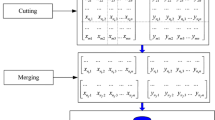Abstract
In this study, an artificial neural network model was developed to predict storm surges in all Korean coastal regions, with a particular focus on regional extension. The cluster neural network model (CL-NN) assessed each cluster using a cluster analysis methodology. Agglomerative clustering was used to determine the optimal clustering of 21 stations, based on a centroid-linkage method of hierarchical clustering. Finally, CL-NN was used to predict storm surges in cluster regions. In order to validate model results, sea levels predicted by the CL-NN model were compared with results using conventional harmonic analysis and the artificial neural network model in each region (NN). The values predicted by the NN and CL-NN models were closer to observed data than values predicted using harmonic analysis. Data such as root mean square error and correlation coefficient varied only slightly between CL-NN and NN model results. These findings demonstrate that cluster analysis and the CL-NN model can be used to predict regional storm surges and may be used to develop a forecast system.










Similar content being viewed by others
References
Bode L, Hardy TA (1997) Progress and recent developments in storm surge modeling. J Hydraul Eng 123(4):315–331. doi:10.1061/(ASCE)0733-9429(1997)123:4(315)
Hansen W (1956) Theorie zur errechnung des wasserstands und der stromungen in randemeeren. Tellus 8:287–300
Hastie T, Tibshirani R, Friedman J (2001) The elements of statistical learning. Springer, New York, pp 347–369
Hubbert GD, Holland GJ, Leslie LM, Manton MJ (1991) A real-time system for forecasting tropical cyclone storm surges. Weather Forecast 6:86–97. doi:10.1175/1520-0434(1991)006<0086:ARTSFF>2.0.CO;2
Jelesnianski CP, Shaffer JWA (1992) SLOSH (Sea, lake, and overland surges from hurricanes). NOAA Technical Report, NWS 48
Kawahara M, Hirano H, Tsubota K, Inagaki K (1982) Selective lumping finite element method for shallow water flow. Int J Numer Methods Eng 2:89–112. doi:10.1002/fld.1650020106
Lee TL (2004) Back-propagation neural network for the long-term tidal predictions. Ocean Eng 31(2):225–238. doi:10.1016/S0029-8018(03)00115-X
Lee TL (2006) Neural network prediction of a storm surge. Ocean Eng 33(3–4):483–494. doi:10.1016/j.oceaneng.2005.04.012
Lee TL (2007) Back-propagation neural network for the prediction of the short-term storm surge in Taichung harbor, Taiwan. Eng Appl Artif Intell. doi:10.1015/j.engappao.2007.03.002
Lee TL, Jeng DS (2002) Application of artificial neural networks in tide forecasting. Ocean Eng 29(9):1003–1022. doi:10.1016/S0029-8018(01)00068-3
Lee DU, Lee H, Seo JW, You SH, Youn YH (2005) Storm surge prediction using artificial neural networks. J Korean Meteorol Soc 41:661–670
Sztobryn M (2003) Forecasting of storm surge by means of artificial neural network. J Sea Res 49:317–322. doi:10.1016/S1385-1101(03)00024-8
Tan PN, Steinbach M, Kumar V (2006) Introduction to data mining. Pearson Education, Boston, MA, pp 515–526
Tissot PE, Michaud PR, Cox DT (2003) Optimization and performance of a neural network model forecasting water levels for the Corpus Christi, Texas, Estuary. In: 3rd conference on artificial intelligence applications to the environmental science, Long Beach, CA. American Meteorological Society (Preprints)
Tsai CP, Lee TL (1999) Back-propagation neural network in tidal-level forecasting. J Waterway Port Coast Ocean Eng ASCE 12(4):95–202
Vested HJ, Nielsen HR, Jensen HR, Kristensen KB (1995) Skill assessment of an operational hydrodynamic forecast system for the North Sea and Danish Belts, Coastal and Estuarine Studies. American Geophysical Union, Washington, DC, pp 373–396
Wilks DS (1995) Statistical methods in the atmospheric sciences. Academic Press, San Diego, pp 419–427
Acknowledgments
This research was carried out as a part of the “Valuation of Precision Improvement of Surge Prediction System” and “Research for the Meteorological Observation Technology and its Application” research supported by NIMR/KMA and KORDI NAP collaboration project.
Author information
Authors and Affiliations
Corresponding author
Rights and permissions
About this article
Cite this article
You, S.H., Seo, JW. Storm surge prediction using an artificial neural network model and cluster analysis. Nat Hazards 51, 97–114 (2009). https://doi.org/10.1007/s11069-009-9396-x
Received:
Accepted:
Published:
Issue Date:
DOI: https://doi.org/10.1007/s11069-009-9396-x




